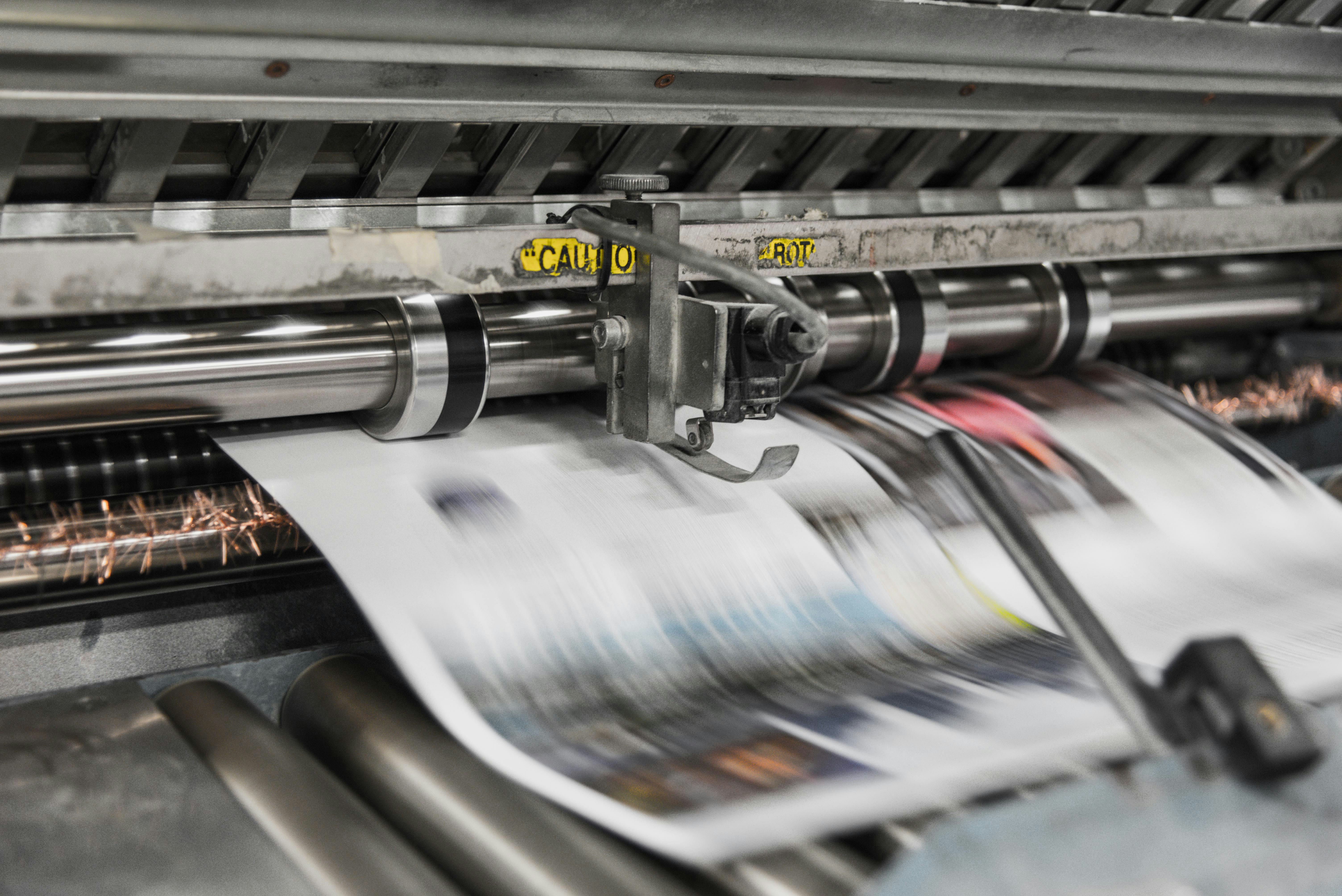Key Differences Between Print and Digital Journalism?
by WriteSeen
Print and digital journalism present distinct differences crucial for today's creators and industry professionals.
- Print journalism delivers information through a tangible medium - newspapers and magazines - featuring scheduled releases and longer-form content.
- Digital journalism, however, spreads news instantly online, enhanced by multimedia elements like videos and interactive graphics.
While print thrives on tradition and credibility, digital wins with speed, broader reach, and audience interaction.
Explore further to gain insights vital for media mastery in a rapidly evolving landscape.
Evolution of Journalism: Print to Digital
Journalism has traveled a transformative journey, shifting dramatically from print to digital. This evolution is essential for creators and professionals to understand the dynamics that impact media consumption today. As the web burgeoned in the late 20th century, it delivered information at unprecedented speeds, shortening the time between an event and its coverage. This marked a pivotal change—digital's rise was not just an upgrade but a whole new world.
- Technological advancements like mobile devices and social media brought news into users' hands, fostering an interactive environment that print journals couldn’t replicate.
- With digital's arrival, marketplaces like WriteSeen became possible—creative hubs where writers and professionals engage without delay or geographic boundaries.
Print establishments faced revenue challenges as they transitioned, prompting new business models and elevating the role of agile digital-first newsrooms. A digital workflow demands a ceaseless cycle, accommodating updates and reshuffling priorities on-the-fly—something an aspiring creator should be mindful of.
Citizen journalism surged with digital tools, as blogs and platforms offered new perspectives. This shift enriched the media landscape, inviting voices global and diverse. It reminds industry pros and up-and-comers to value and incorporate varied viewpoints within their works, further expanding their influence.
Content Delivery and Consumption
Understanding how journalism is delivered and consumed across print and digital formats is vital for anyone in media. These modes define how audiences engage with content and impact the creative delivery treadmill, which puts creators in high demand. Print traditionally uses physical distribution, often with set schedules like daily or weekly editions. Digital, on the other hand, thrives on immediacy, constantly updating with fresh stories—delivering news in seconds.
- Digital journalism elevates engagement possibilities with multimedia, adding layers through videos, graphics, and hyperlinks—providing depth that print cannot.
- Algorithms tailor content delivery on digital platforms, personalizing the experience according to readers’ habits and preferences, enhancing targeted reach.
- The rise of digital enables instantaneous sharing and discussion, engaging users in a dynamic that print simply can't compete with.
These differences in delivery impact how audiences consume news. Searching for historical context becomes effortless with digital archives, giving readers historical depth at their fingertips. In contrast, print provides readers with a tactile journey through stories, appealing to those craving a traditional reading experience.
Audience Reach and Interaction
Audience reach and interaction between print and digital journalism present significantly different landscapes. Understanding these can help creators tailor their projects more effectively. Digital's reach is global, while print often serves local or niche markets. This broad net allows digital content to be consumed by audiences far removed from its point of origin, opening up new vistas for collaboration and influence.
- Digital platforms skew towards a younger demographic, with mobile access being dominant, whereas print often caters to a loyal, older audience.
- Online spaces foster community by enabling real-time feedback and global conversations, offering a level of interaction that print articles can’t mirror.
- Platforms like WriteSeen remove borders, connecting creators with a global audience, offering immediate feedback, and facilitating personal and professional growth.
By utilizing the unprecedented metrics available online, media producers can analyze audience preferences with precision, allowing content to be fine-tuned for greater impact. User-generated content and participatory journalism maintain interactive environments that stimulate curiosity and discussion, key binds in retaining active and engaged audiences. The digital realm encourages diverse storytelling, challenging and enriching the ways narratives are traditionally constructed.

Timeliness and Flexibility
Digital journalism stands out due to its remarkable speed and adaptability. It meets modern audiences' demands for up-to-the-minute updates, ever ready with the latest news as it unfolds. This timeliness also creates expectations among audiences that need fast-paced, flexible content delivery—pushing creators to keep up with innovation and quick thinking.
- Digital empowers real-time news coverage, enhancing trust and credibility by promptly addressing events and corrections—providing immediacy and accuracy at all times.
- Print, while less immediate, offers a chance for in-depth analysis, allowing writers to deeply explore topics and deliver nuanced insights when ready.
- Digital platforms can easily adapt priority stories as they unfold, maintaining direct engagement with current events while rapidly correcting previously published news if necessary.
The challenge for digital lies in equating fast delivery with thorough fact-checking, underscoring the importance of media literacy and vigilance. The freedom digital provides comes with responsibility—balancing speed with skill becomes a tactical advantage for ambitious media professionals and creators alike. Understanding this balance is crucial in today’s media landscape, where information travels fast, and credibility is at stake.
Cost and Revenue Models
Understanding the differences in cost and revenue models between print and digital journalism is crucial for creators and industry professionals alike. These structures impact how content is produced, distributed, and monetized. Let's delve into the distinct elements that separate print from digital, illuminating strategies for thriving in each domain.
Print journalism carries significant overhead costs. These include printing presses, paper, and physical distribution. Digital platforms reduce these expenses by offering a direct pipeline to audiences via the internet. This shift impacts revenue strategies dramatically.
- Print relies on traditional advertising, subscription sales, and sometimes government support. These methods face challenges due to declining circulation and rising production costs.
- Digital outlets often utilize a mix of ad placements, paywalls, and subscriptions. They also explore newer revenue streams like affiliate marketing and sponsored content—an area ripe for creative exploration.
- Digital offers flexibility with revenue models. With analytics tools, creators can tweak strategies quickly, seeing what resonates with audiences and adjusting in real-time.
These dynamics encourage creators to innovate. Understanding cost constraints and revenue potential in both print and digital journalism can inform better strategic decisions, making the content more sustainable and rewarding.
Quality and Ethical Standards
Quality and ethics form the backbone of journalism, and comparing these between print and digital formats reveals key differences and challenges. Both mediums aim for accuracy and trustworthiness, but the paths they take to get there vary significantly.
Print journalism often enjoys a reputation for meticulous editing and vetting processes. The structured workflows support accuracy and uphold ethical standards, making print pieces typically seen as reliable and authoritative.
- Digital journalism, due to its speed and volume, faces hurdles. The demand for immediate updates can sometimes press writers to prioritize speed over thorough fact-checking.
- Digital spaces must develop robust editorial processes to maintain credibility. Encouraging transparency, sourcing, and corrections can help foster trust online.
- Print provides depth through in-depth analyses and long-form content, while digital storytelling can integrate multimedia for richer narratives, also pushing ethical boundaries regarding how stories are framed.
As creators navigating these spaces, staying committed to quality ensures audience trust, whether you're printing ink or pixels. Applying ethical principles consistently boosts your credibility, encouraging more engagement and loyalty from your audience.

Pros and Cons of Print and Digital Journalism
Being aware of the pros and cons of print and digital journalism equips you with the insights needed to leverage each format's strengths while developing strategies to overcome any weaknesses. This understanding can guide your creative choices, ensuring your work resonates across platforms.
Print Journalism:
- Offers a tactile and nostalgic experience. People often appreciate this aspect when consuming content.
- Provides space for in-depth coverage and investigative journalism, offering credibility that builds trust.
- Is limited by geographic reach and lengthy production cycles, hindering instant updates.
Digital Journalism:
- Enables immediate publication and global reach 24/7, reaching audiences wherever they are.
- Integrates interactive elements and multimedia, enhancing the reader experience and engagement.
- Risks undermining quality due to the race for speed—this challenge can affect trust and promote misinformation.
Understanding these factors can help optimize your approach, ensuring you're leveraging the right medium for your objectives. Deciding when to delve deeply as print does or when to provide quick, engaging snippets as digital allows will define your success and impact.
Conclusion
The differences between print and digital journalism shape how stories are told and consumed, each with unique challenges and benefits. By understanding evolution, content delivery, audience interaction, timeliness, revenue models, and ethical standards, you can better navigate the complex media landscape. This knowledge is essential for cultivating a dynamic, impactful presence in either format—or both.
TAGS